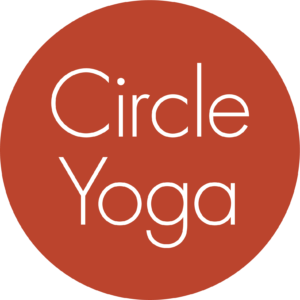Sacred Objects at Circle Yoga
Honoring the Roots of Yoga and Mindfulness
Have you ever been curious about the Buddha or Hindu deity statues at the studio? What about the meaning behind the OM symbol and sound? And how are the meditation bells used?
In our ongoing work dedicated to making Circle Yoga a more inclusive and equitable community, we wanted to do more to acknowledge the lineage, meaning and cultural significance of the sacred objects present in our studio spaces. We created this online photo and story gallery that features many of the sacred or traditional objects found at the studio. In addition to the online gallery, information about these objects will be posted in small frames at the studio (coming soon). We hope this helps our students, teachers, staff learn more about the significance of these objects and feel more connected to the space and to the practices we share.
We honor the roots of yoga in India as a holistic discipline, as well as the Buddhist lineage of our mindfulness community in the tradition of Thích Nhất Hạnh.

Sacred Objects Gallery

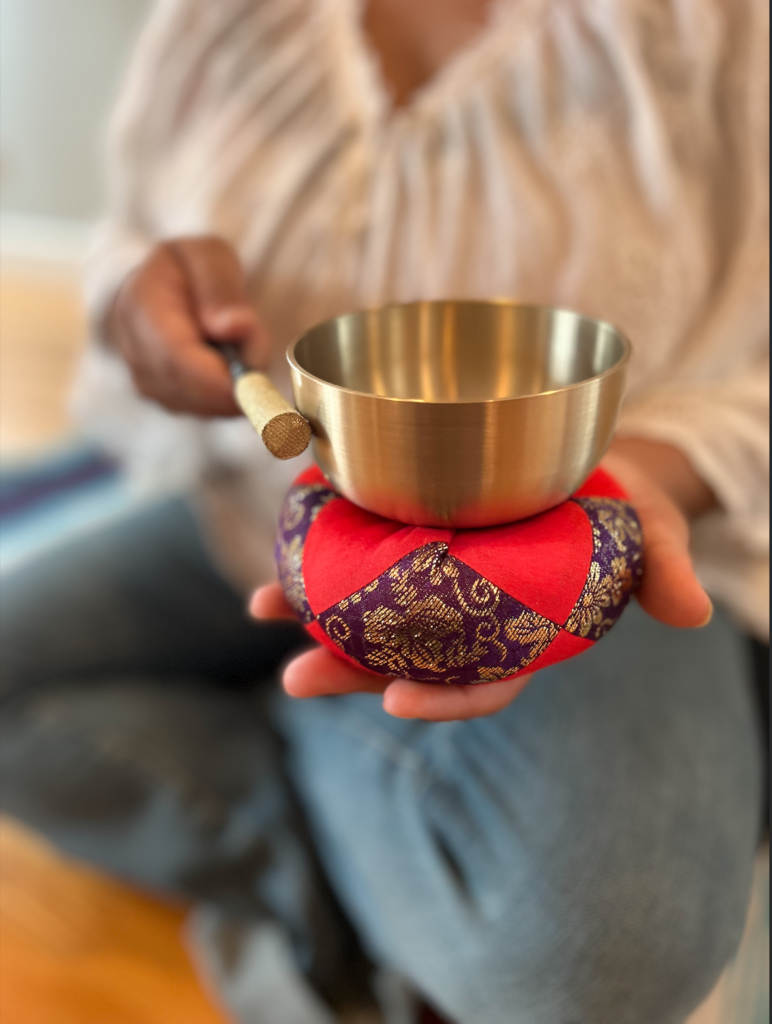
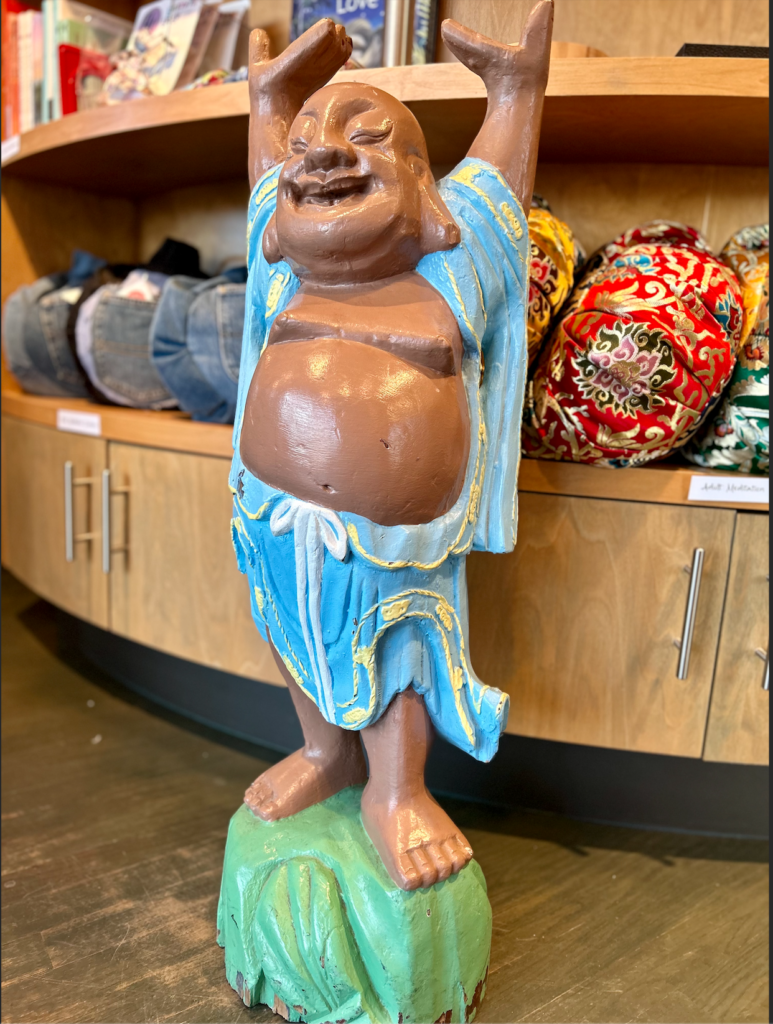
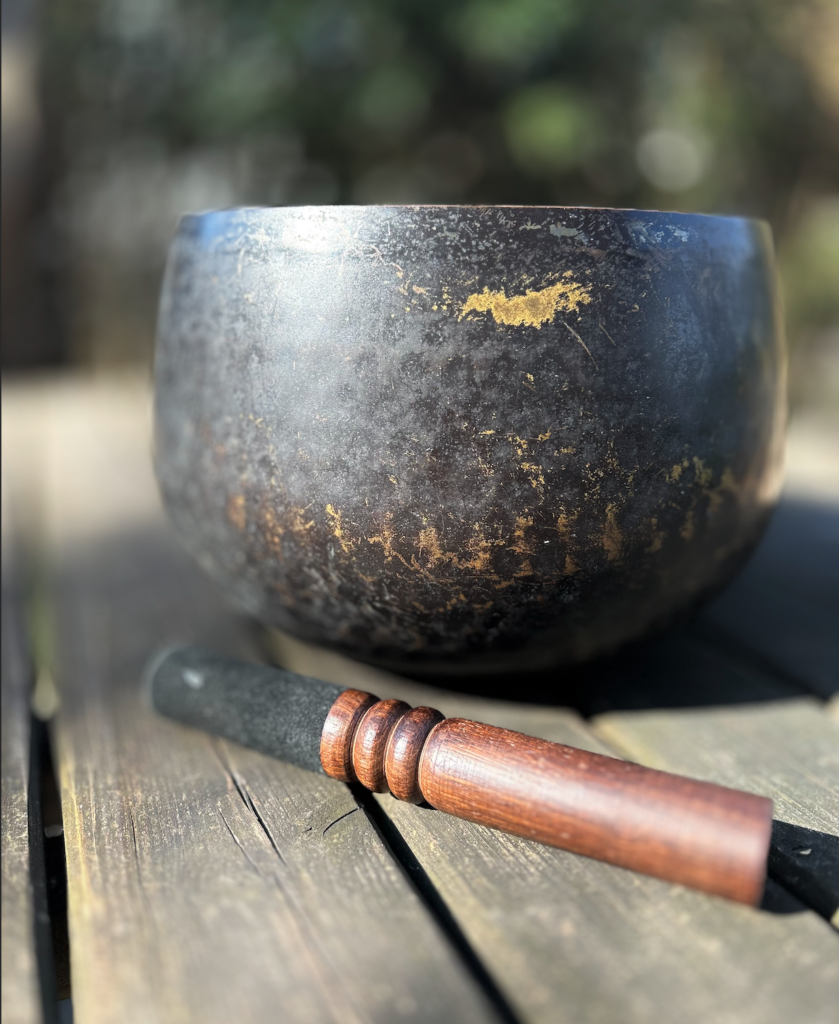

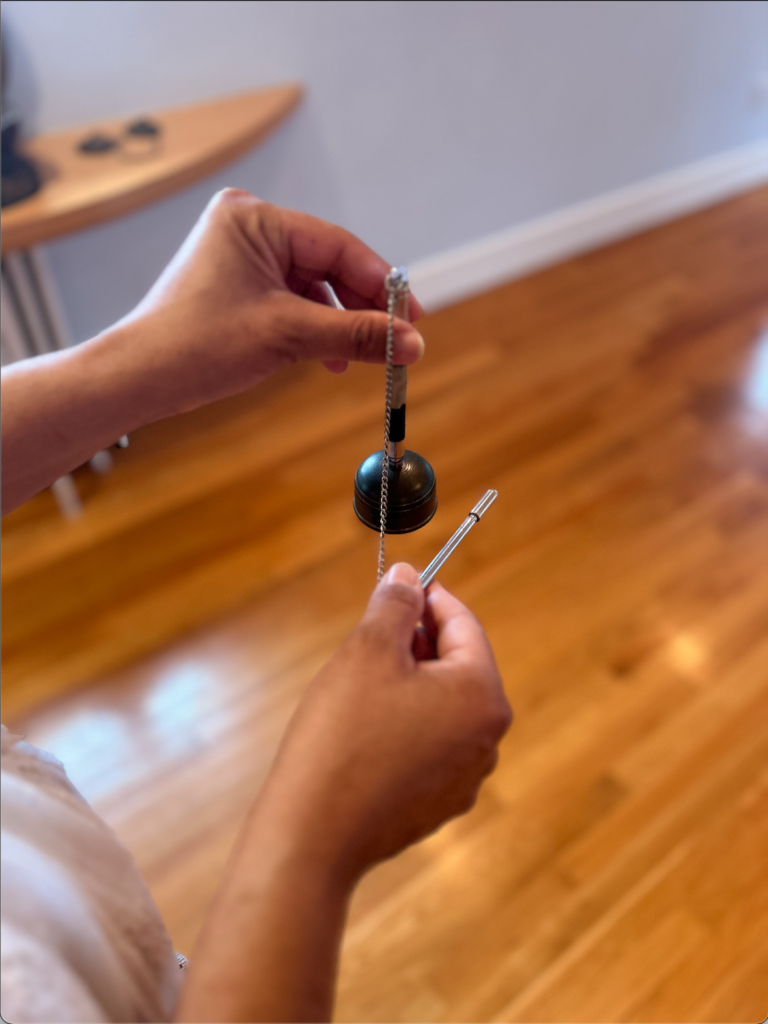
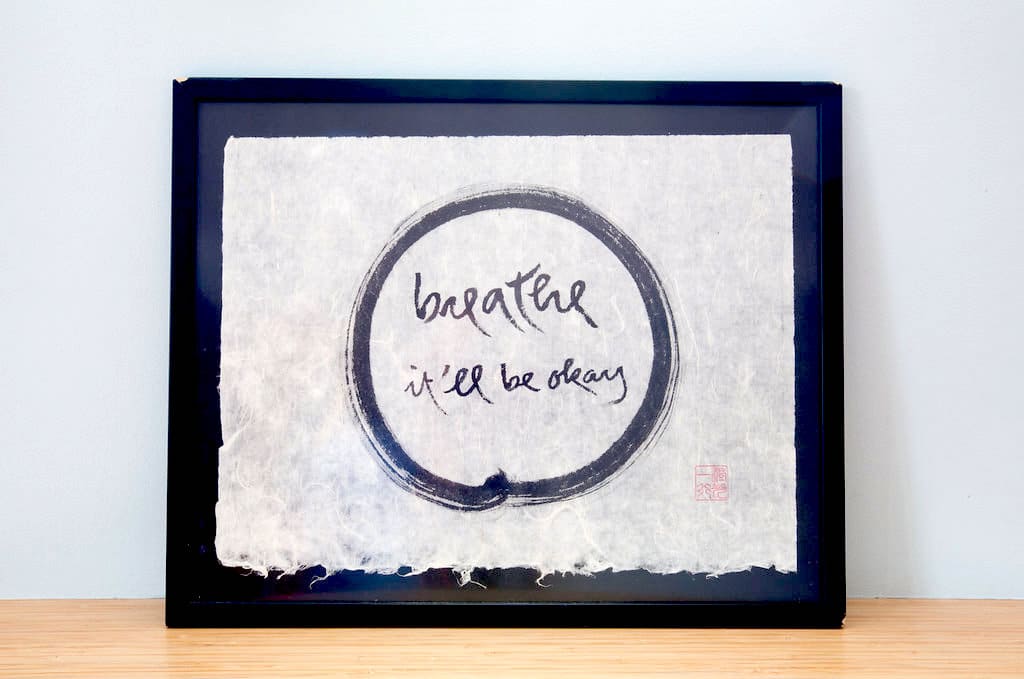

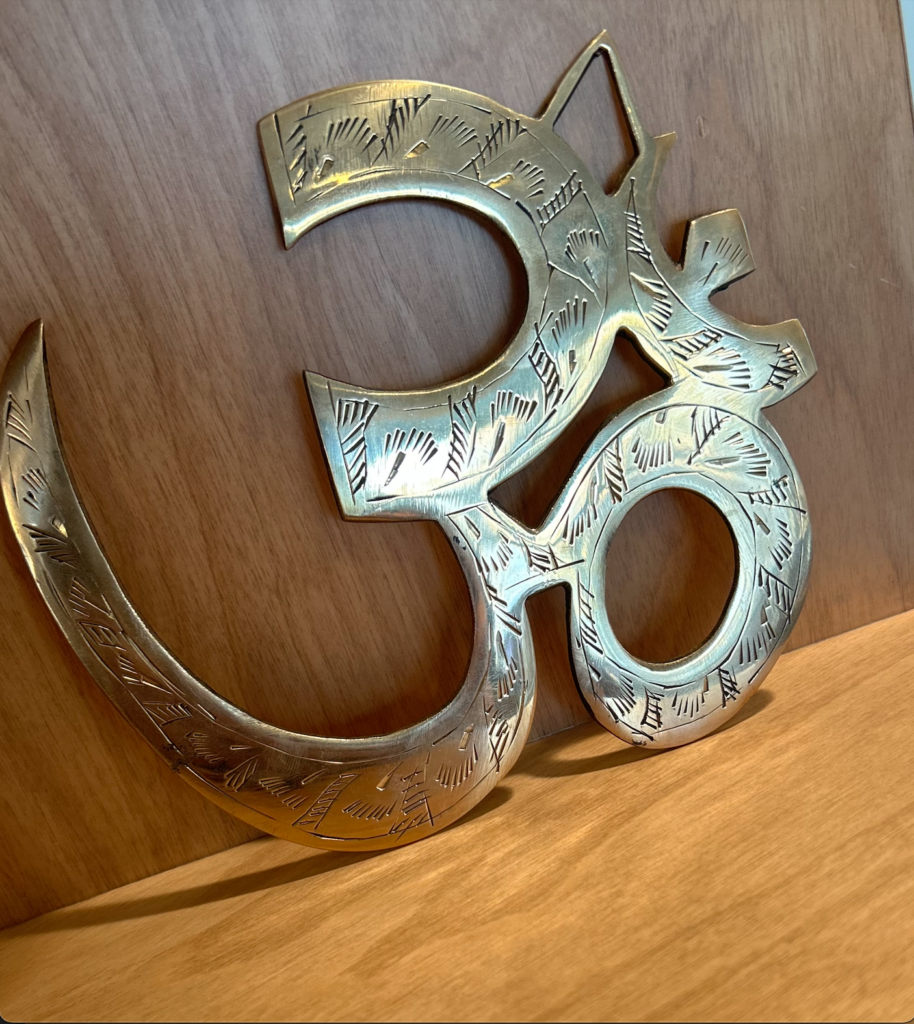


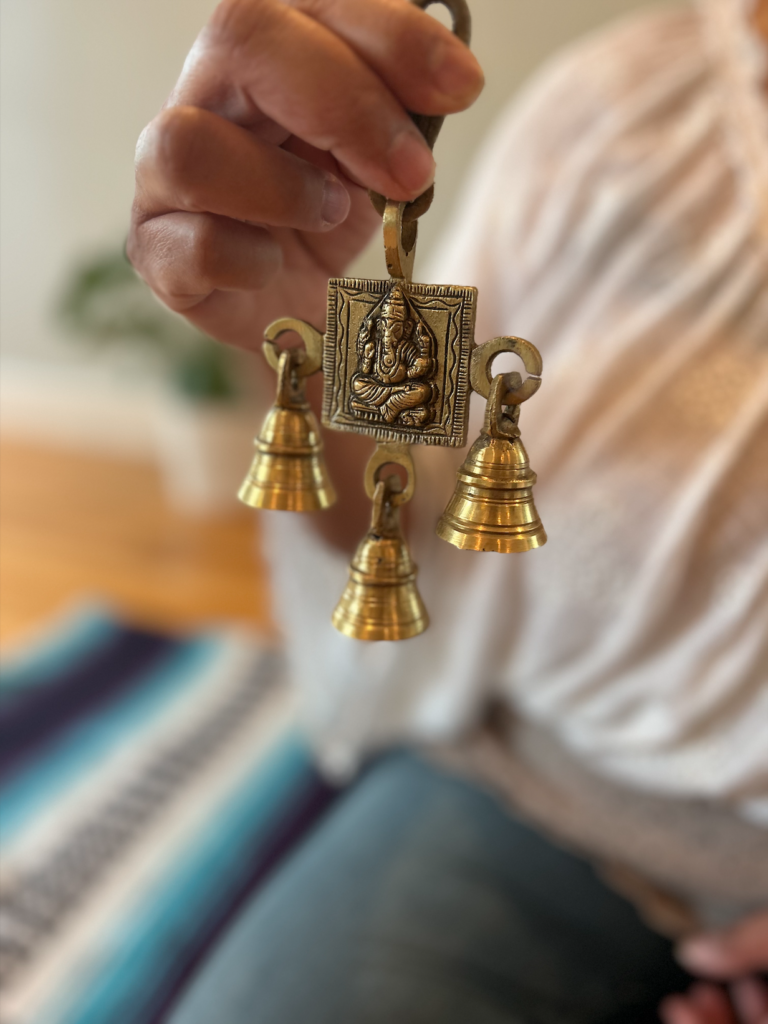
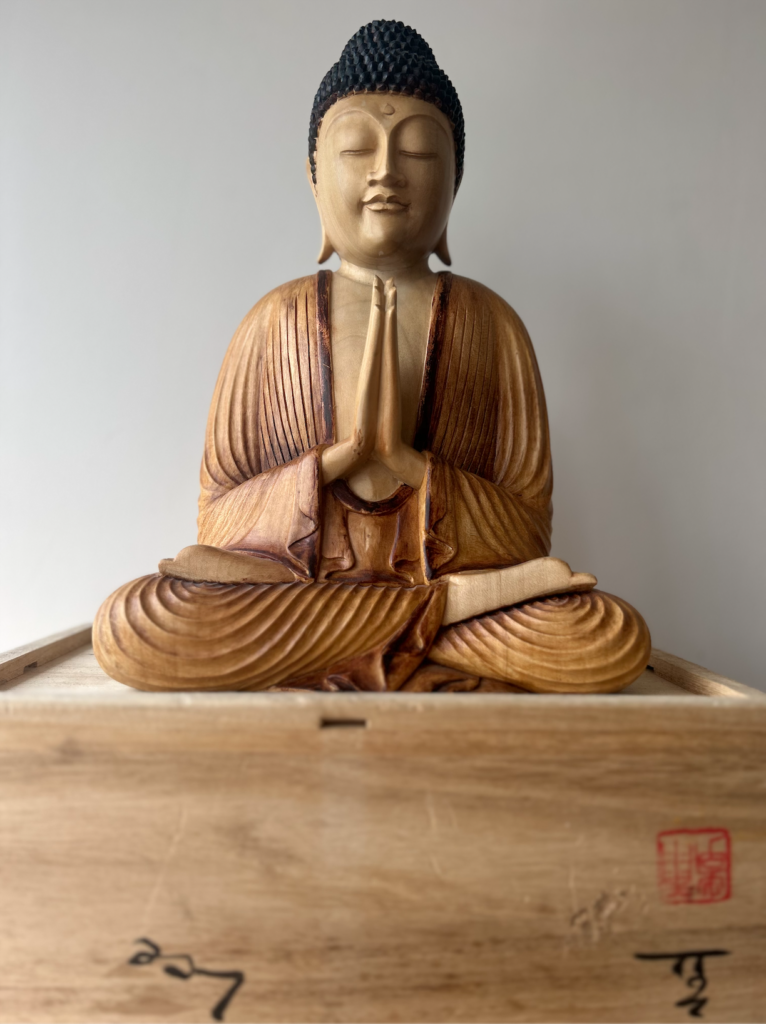
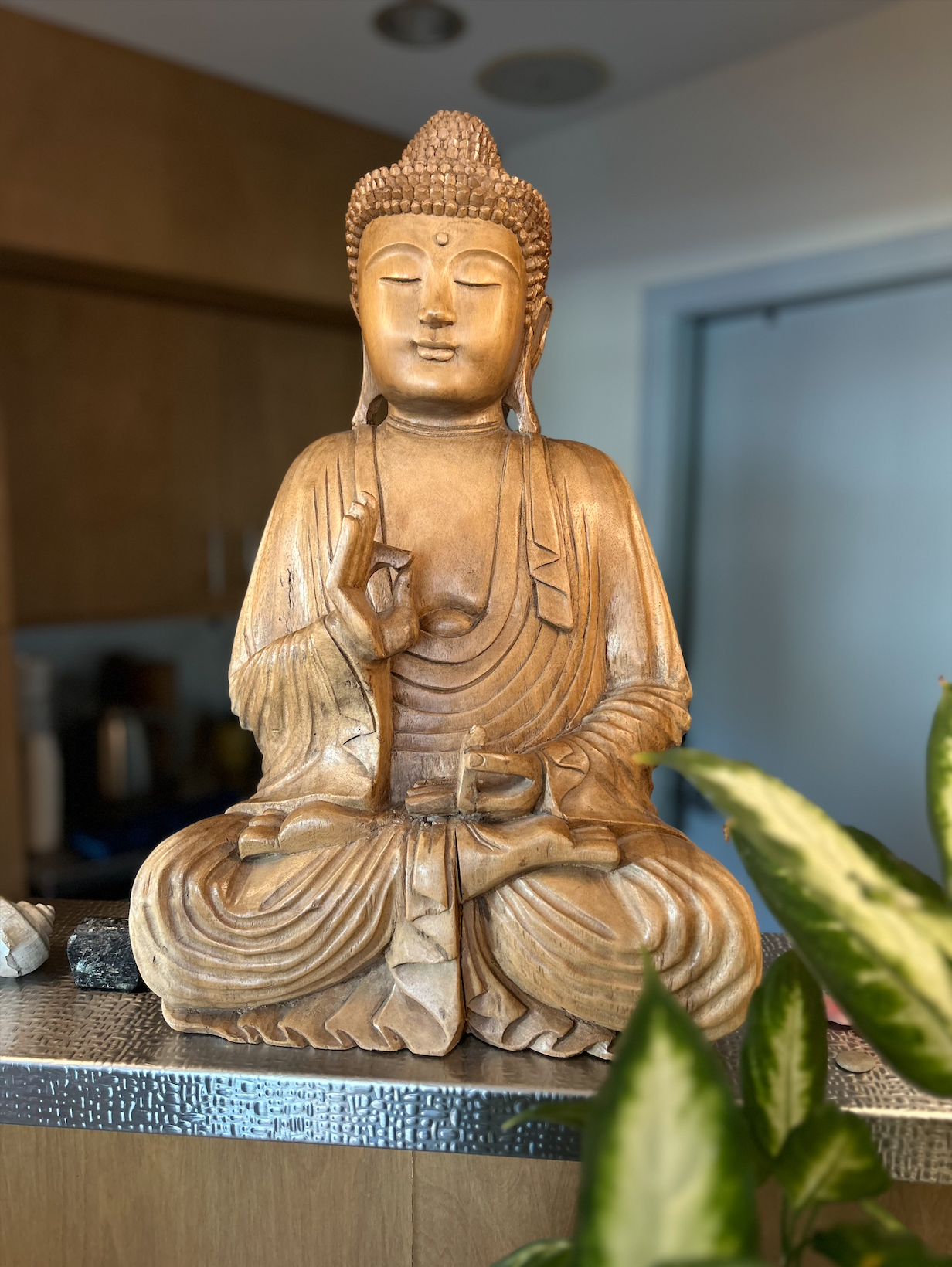
This wooden Buddha has kept our deskers company for many years now. He came to us from a Buddhist shop in South Miami Beach after we renovated the studio in 2006. This Buddha is shown performing vitarka mudra. The right hand makes a circle out of the thumb and forefinger, a symbol of the great wheel of the Buddha’s teaching that rolls onward through time and communities.
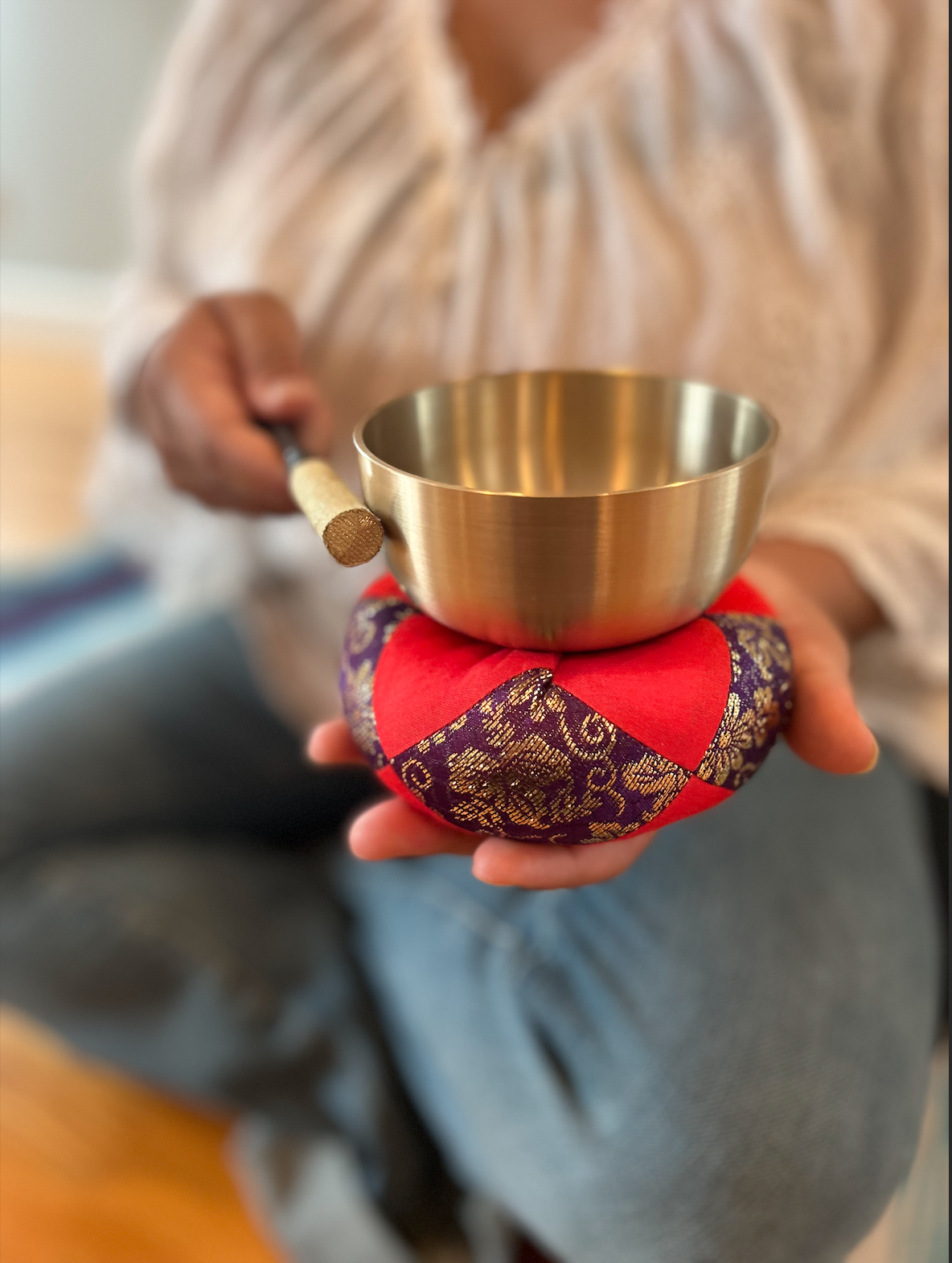
Meditation bells come in many shapes and sizes. This small bell functions just like one of its larger cousins. This particular bell and its cushion are in the Japanese style. Mini bells are a great tool for children who, like adults, can learn to use the bell to enhance mindfulness and guide the flow of a group meditation practice. In the Thich Nhat Hanh tradition, the one who wields the bell is referred to as “bell master.”

This laughing Buddha has been with Circle Yoga since the studio was founded in 2023. Laughing Buddhas are especially beloved in China, where they are known as budai, and symbolize contentment, pleasure, and success. Unlike more classical, somber representations, laughing Buddhas are often painted in bright colors and are depicted in more energetic poses. A friend of our founder painted this Buddha. You can see that this Buddha is particularly well-loved from his shining tummy and forehead where students rub him for comfort and good luck!
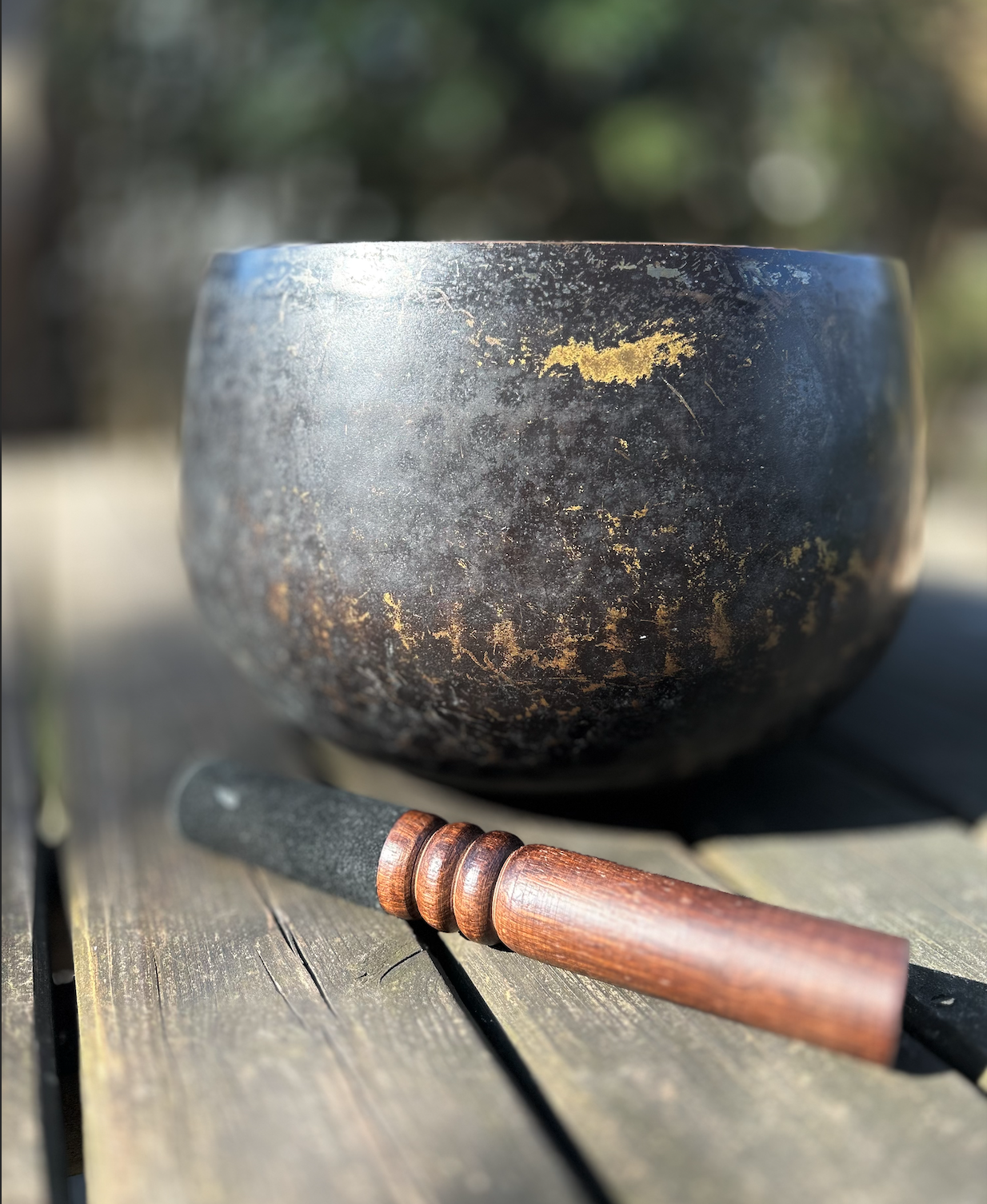
Annie Mahon, our studio founder, purchased this singing bowl of Tibetan origin during the 14th Dalai Lama’s visit to Washington, DC in 2011. He was visiting to oversee a Kalachakra ceremony, an important ritual in Tibetan Buddhism in which monks create an elaborate mandala out of colored sand representing the infinite wheel of time and the universe contained within it.

This is Ganesha, the Hindu god of thresholds and beginnings. In Sanskrit, the ritual language of Hinduism, a statue of a deity is called a murti. Ganesha is widely beloved in India as the god of new beginnings and is invoked not only at the beginning of many rituals and rites (called puja), but also at the start of all kinds of ventures, from entering college to opening a new business to beginning a yoga practice. This murti’s origins are unknown to us at this time.
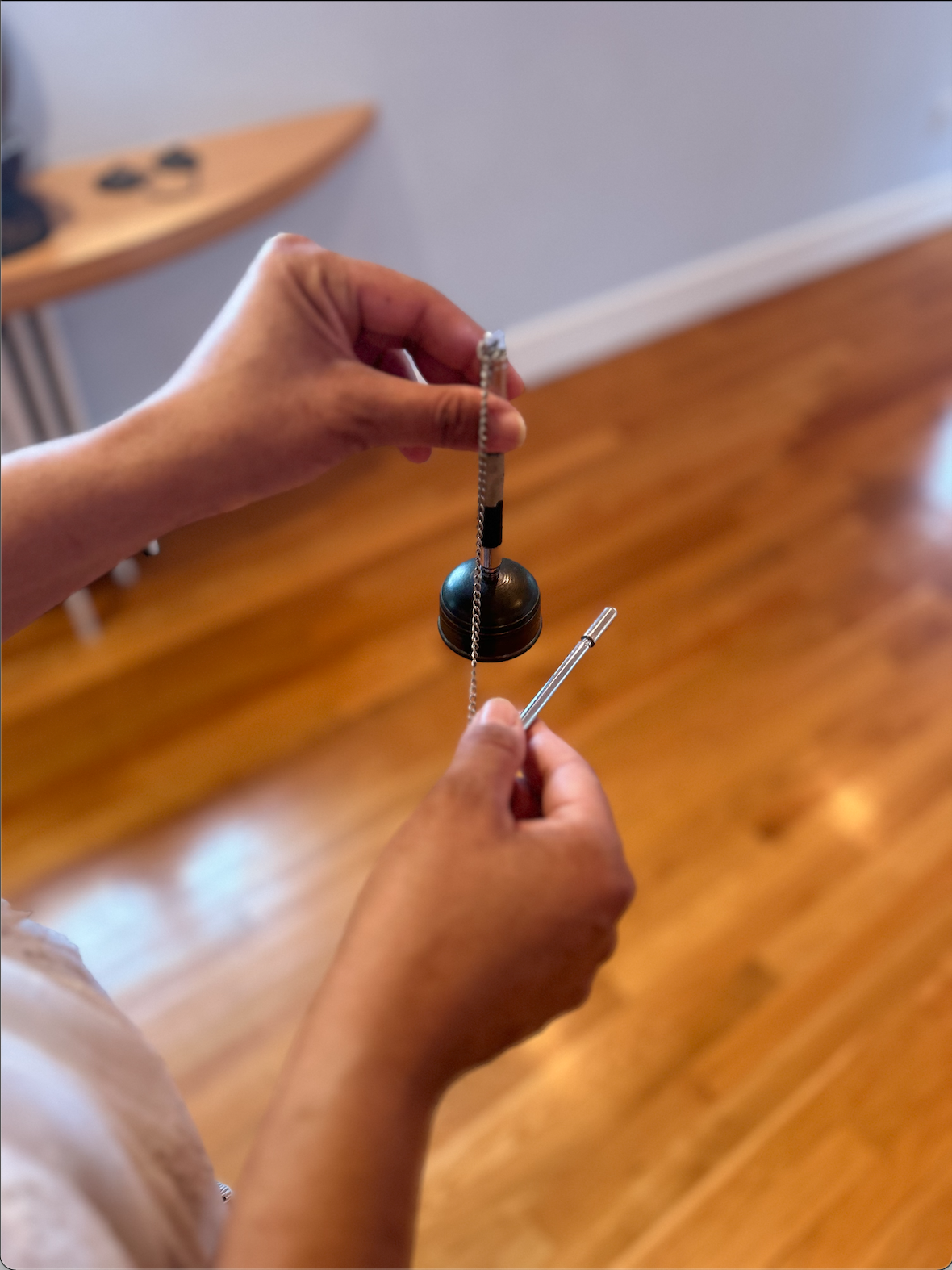
Bells play a central role in meditation practice, and because there are diverse forms of meditation, there are also diverse forms of bells! This one is designed to be used in walking meditation and was gifted to our studio founder, Annie Mahon, by another member of the sangha, or practice community.
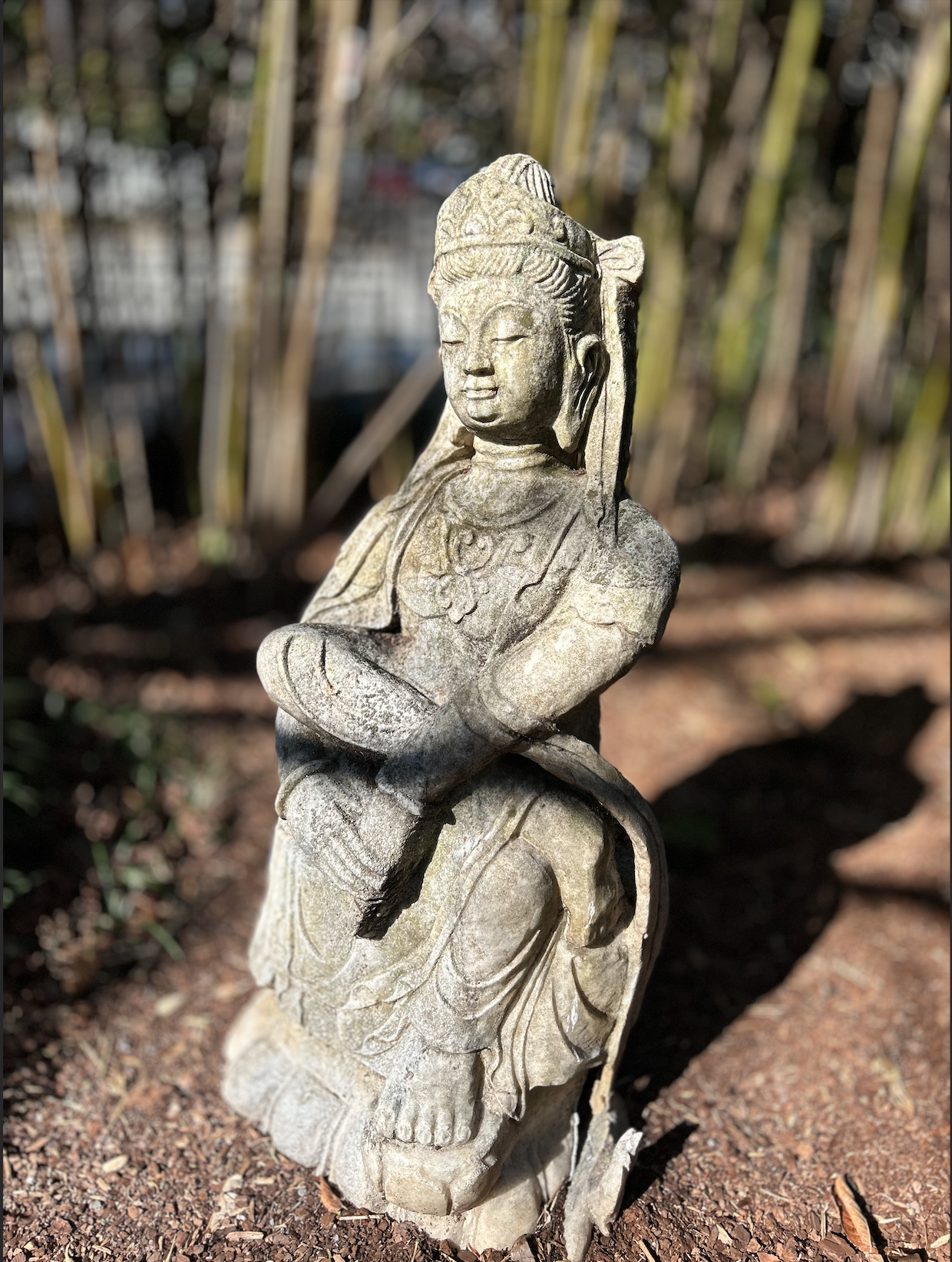
Kwan Yin (Quan Am, Guanyin, or Kannon) is "she who hears the cries of the world." She is the female representation of the enlightened being, or bodhisattva, of compassion. She is revered by Buddhists, as well as Daoists and Confucians, as a maternal figure who eternally seeks to alleviate suffering in the world. In some representations she is shown with eleven heads and multiple arms, a symbol of her far-reaching, eternal desire to listen to and heal our pains.
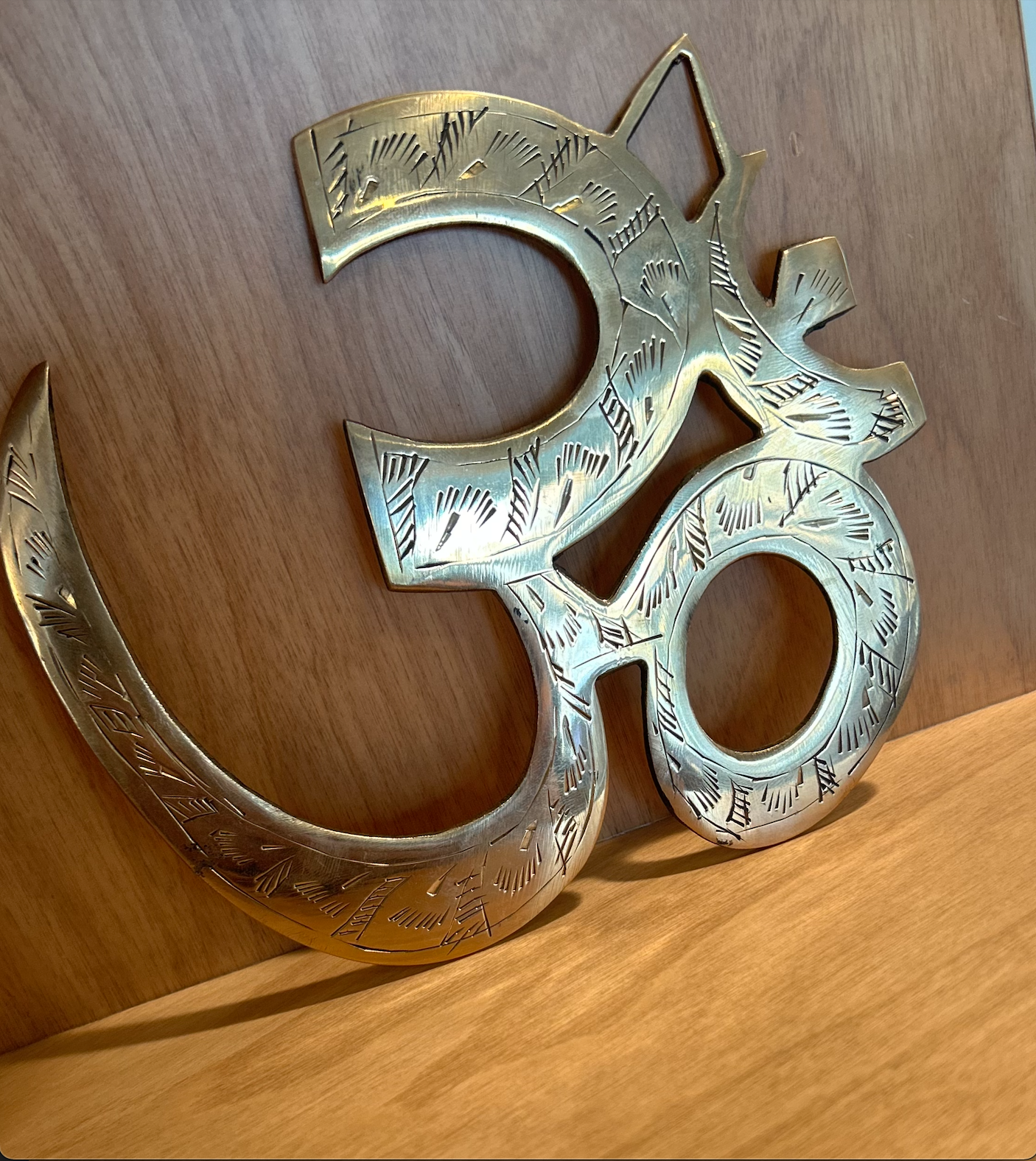
OM, composed of the individual sounds of ah, oo, and mm, is regarded as the sound that connects us all, or the sound of the universe. This symbol and sound is revered in many spiritual traditions and cultures — including Hinduism, Buddhism and Jainism — and often begins and closes the chanting of mantras and ritual prayers. Yoga practitioners may meditate on the sound of OM or recite it as a form of spoken or unspoken meditation. Chanting OM is a rich vibratory experience - give it a try!
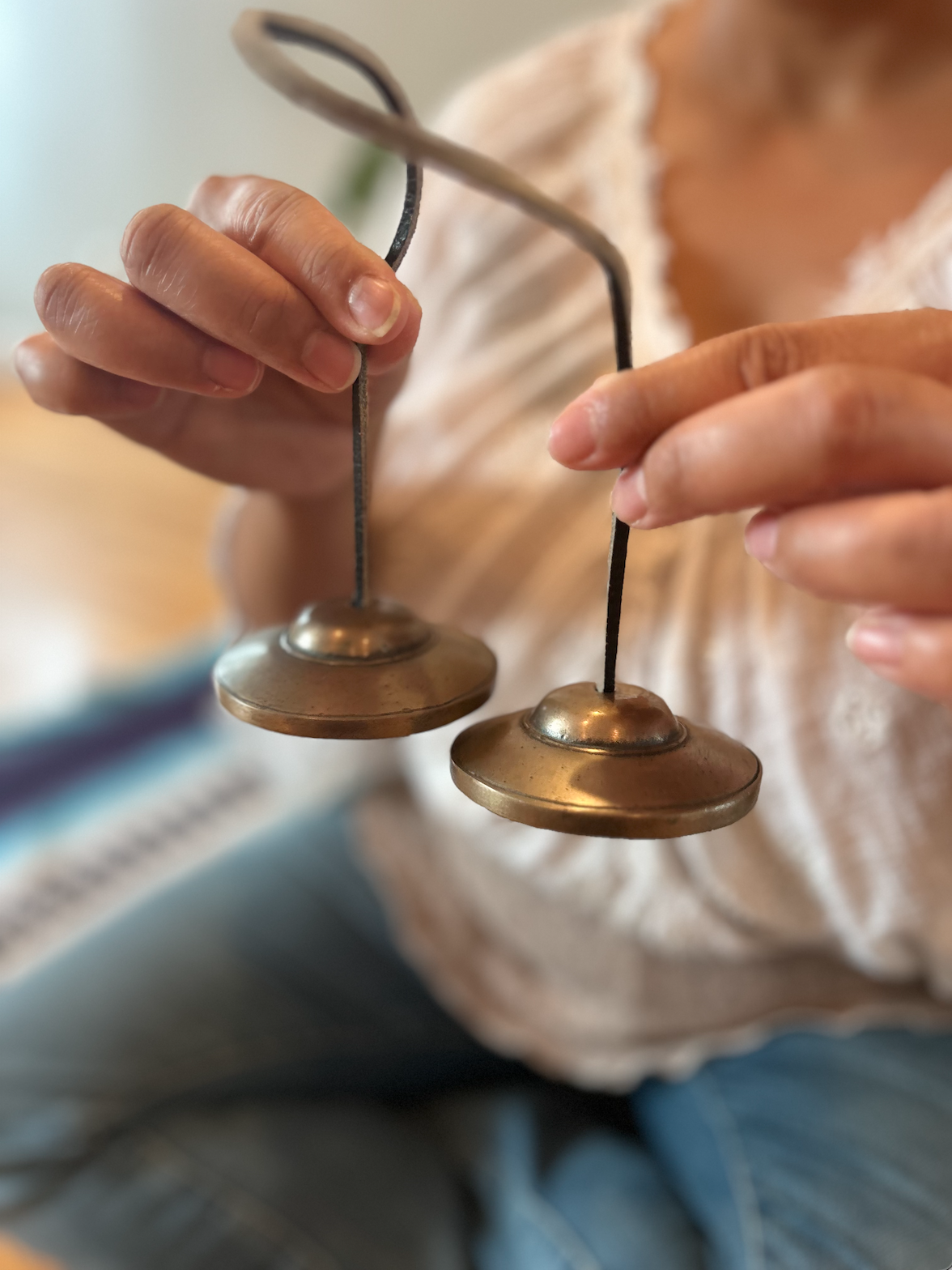
This is called a tingsha bell, and they are integral to Tibetan meditation and prayer practices. These are rung by tapping one cymbal against the other, which produces a clear and high-pitched chime. In addition to a bell’s typical use as a tool to enhance mindfulness, these bells are often specifically used to mark the rhythm or meter during long sessions of chanting.

This Buddha is shown in bhumisparsha mudra, the earth-touching gesture. In Buddhist scripture, the Buddha is said to have touched the earth after he achieved enlightenment and, in that moment, the earth rumbled and shook to dispel the demon of illusion. We found this Buddha at an Asian art shop in Dupont Circle.

The calligraphies framed at the studio were all done by Zen Master Thich Nhat Hanh. Each drawing acts as a “bell of mindfulness” or practice reminder for the viewer, reminding us to arrive in the here and now. Circle Yoga Founder Annie Mahon has been a student of Thich Nhat Hanh since the 1990s and purchased these calligraphies over the years while on retreats. "In my calligraphy, there is ink, tea, breathing, mindfulness and concentration. This is meditation. This is not work." - Thich Nhat Hanh

This bell is distinctly Hindu in its origins. Bells hold a special place in Hindu ritual and worship. They are most often found hanging outside of temple sanctuaries. At the beginning of prayer, they are used to wake the deity, announce the presence of the devotee, and dispel evil. These small bells feature an image of Ganesha, the Hindu god of thresholds and new beginnings.
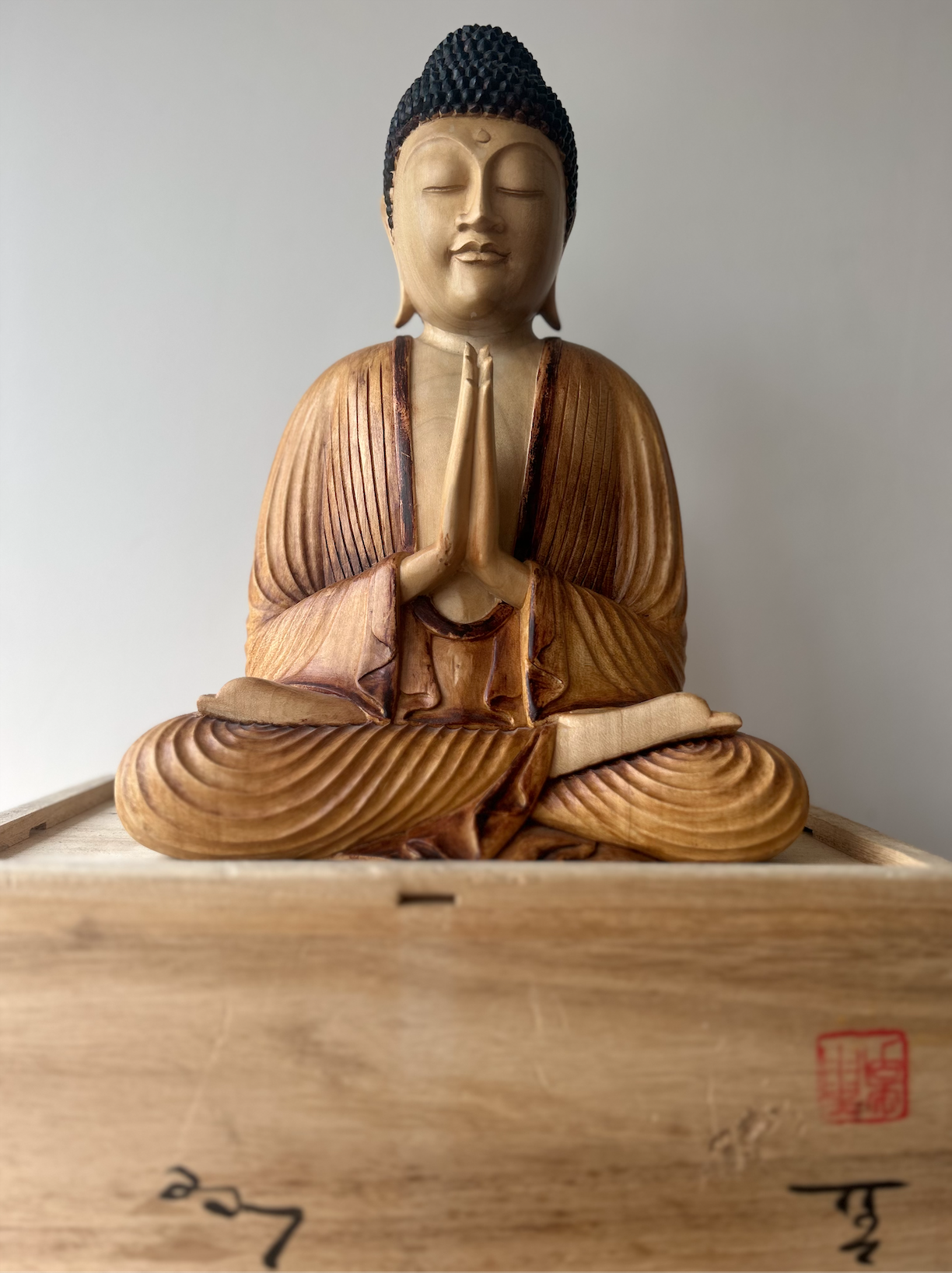
This statue of the Buddha was purchased for the Pharmacy studio and to accompany the members of the Opening Heart Mindfulness Community in their practice. It is of Korean origin. This statue depicts the Buddha with his hands pressed together in anjali mudra. This mudra has been widely used in Asian art and religious artifacts for centuries and connotes respect, greeting, and divine offering.
Continue to Explore
In addition to exploring the gallery above, you can follow any of the hyperlinks below for a broader, more experiential tour of the sacred objects.
Take a trip to Plum Village Monastery in France, where Thích Nhất Hạnh’s students continue to practice and teach. With them, you can see how students of all ages learn to become a bell master, listen to the Great Bell Chant, take your first steps of a walking meditation, and learn how to invite the bell from Thích Nhất Hạnh himself.
Roll back the clock and learn about a major Buddhist event that took place right here in Washington, DC in 2011: The Kalachakra, where our founder purchased a singing bowl that lives in our space. Go back further in history to learn about the myths surrounding the goddess Kwan Yin, who keeps our community company in our lovely garden, and to see examples of mudras in medieval Buddhist art in Japan.
Sacred objects like ours aren't trapped in the past, though. They continue to be used in practice and ritual and as the focus of learning and research in the 21st century. Get on social media and you can see how bells and murtis are used in modern Hindu rituals. Modern publications give out advice on how to place laughing Buddhas in your home to create ideal energetic harmony and prosperity.
We hope you find this educational and enjoyable. We remain committed to our work of inclusivity and invite you to join us in our conversations around our efforts. If you have any questions, we warmly encourage you to reach out to us.
This is a project of the Racial Equity Team at Circle Yoga. Thank you to the Circle Yoga staff and teachers who contributed to the content and creation of this page, including Joey Gottlieb, Eduardo Guédez, Shannon Allen, Kellie Finn, Zeshan Mustafa, Anne Kennedy and Annie Mahon.
If you have questions, feedback or more information to share about these sacred objects, we'd love to hear from you! Contact us.
